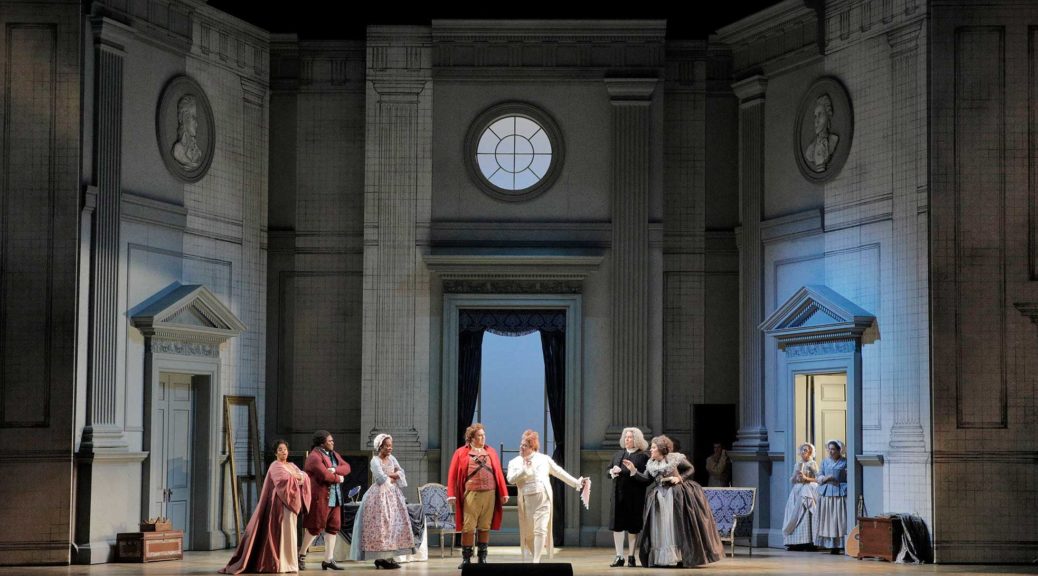
FIGARO GREAT, ‘MARRIAGE’ LESS SO
It’s been called the perfect comic opera, “The Marriage of Figaro” or, more accurately, “Figaro’s Wedding.” And the current go-round at the S.F. Opera, while not perfect, catches its humor and dexterity as only Mozart and his librettist Da Ponte could have created.
Think about it: In the elegant drawing rooms, intrigue upon intrigue. Assignations in switched identities. Hired help conspiring to outwit the libertine count. The women outwitting the men. Figaro desperately trying to wiggle out of a long-forgotten marriage contract (to his own estranged mother!). A love-starved young swain. And a whole story that is revolutionary, reflecting a democratic surge against an establishment ruler—-an incendiary concept when first penned for the courtly patrons in the 18thcentury.
Though Canadian, Stage Director Michael Cavanagh adroitly moved the opera’s locale to America, briefly unfurling a US flag nextto asimulated fife-and-drum corps. Relevance galore!!
But there were problems. The departure of close to 20 percent of the patrons after the second intermission (encountered Oct. 16) tells me they voted with their feet. A four-hour midweek opera, about the length of a movie triple feature, is too long for our times. Deletion of the second intermission, employing a far less high-and-mighty architectural set, as well as judicious cuts, could alleviate the difficulty and actually help propel the humor and drama while enabling commuters getting to work without gulping coffee all morning. Designer Erhard Rom, who did this new production, deserves better outcomes with his next venture.
The standout performer in this uneven cast was the powerful Texan baritone Michael Sumuel, who could play the dumb Figaro just as well as the brainy Figaro. His voice carried well and comfortably, and a few adept dance steps did not slow his singing at all. His adversary is the Count, played by the Rumanian-Hungarian newcomer Lemente Molnár with pompous authority until his comeuppance. Both showed an admirable low range throughout.
For the Mozart aficionado, it’s all about the vocal ensembles, where the parts offer not just harmony and feelings, but also story-telling impetus with bifurcations. The success of these was a feather in the cap of conductor Henrik Nánási, who also led a refined orchestra distinguished by a delicate fortepiano in place of a beefy pianoforte.
The ladies were partly slow to warm up, partly miscast. By the final hour however the Countess (Nicole Heaston) and Susanna (Jeanine De Bique from Trinidad) paired for an exquisite Letter Duet and did their compelling solo arias fetchingly—“Dove sono?” and “Deh, vieni.”
And for those who stuck it out to the fourth act, they could revel in Mozart’s clever in-joke as the angry Figaro sang his Jealousy Aria (“Open Your Eyes!”). Figaro voiced his concern over being cuckolded, traditionally symbolized in Europe by stag’s horns. At which point the orchestra interjects French horns in a derisive ha-ha-ha triplet phrase.
Worth noting in the large supporting cast were tenor Greg Fedderly as a foppish Basilio, and the ground-shaking bass James Creswell as Dr. Bartolo.
Mozart’s “Nozze di Figaro,” in Italian, new production, at S.F. Opera through Nov. 1. Opera House, S.F. For SFO info: (415) 864-3330, or www.sfopera.com.